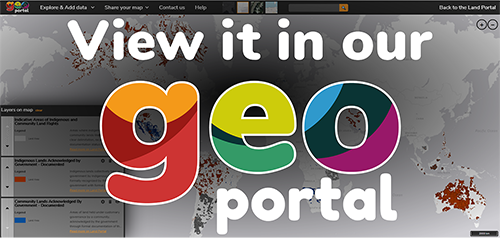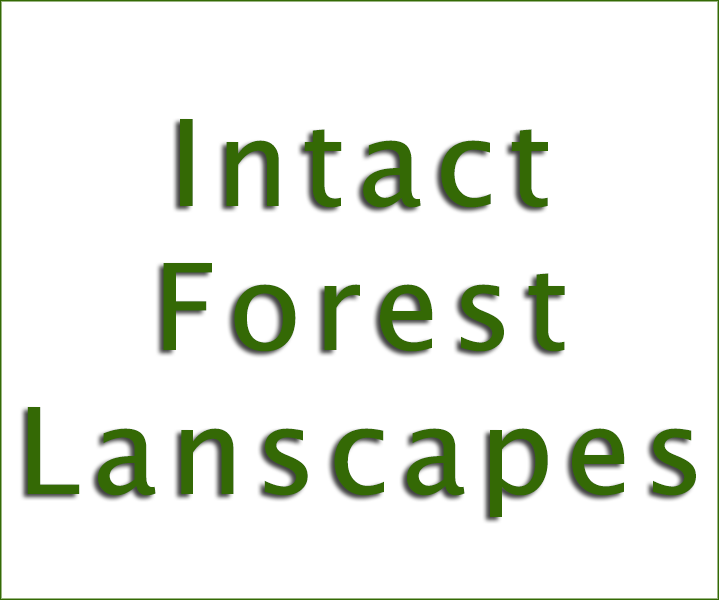
Intact Forest Landscape (IFL) are defined as “an unbroken expanse of natural ecosystems within the zone of current forest extent, showing no signs of significant human activity and large enough that all native biodiversity, including viable populations of wide-ranging species, could be maintained. Although all IFL are within the forest zone, some may contain extensive naturally tree-less areas, including grasslands, wetlands, lakes, alpine areas, and ice.” This definition which the IFL maps is based on builds on the definition of Frontier Forest that was developed by WRI (Bryant et al., 1997). IFL are mapped at global scale for the years 2000, 2013 and 2016. IFL change is documented for 2000-2013 and 2000 - 2013 - 2016. All data is freely available on the IFL website.
View the IFL for year 2016 in our geoportal
Why does the Intact Forest Landscapes (IFL) dataset matter for the Land Governance community?
Environmental change has an influence on how land and natural resources are accessed and used. Forest landscapes play an important role for assuring the intactness of landscapes, e.g. as a regulator for local climates or reservoirs of biodiversity. Their presence indicates the overall environmental status. Degraded landscapes lack necessary resilience to resist global changes like climate change. As a consequence, environmental change can destabilize existing land and resource governance institutions and associated property rights across the spectrum of landscape types. The IFL are crucial for the environmental status, especially in ecoregions dominated by forest vegetation. Here, large areas of intact forest indicate high biological diversity, resilient landscapes, stable climate conditions, low pressure on resources and abundance of ecosystem services.
What is the status?
The first global IFL map was prepared in 2005-2006 and showed IFL extent for year 2000 and enabled measuring of forest degradation (understood as a reduction in ecological integrity across a forest landscape) at the global, biome and national levels.
A global IFL map update was performed in 2014, showing the extent of IFL by the end of year 2013, and their degradation since year 2000. In the end of 2017 – early 2018, the update of the global IFL map was completed for the year 2016 (based on the year 2016 latest available cloud-free Landsat observation ). The IFL Mapping Team is continuing to improve the IFL base map and to provide periodic updates as new data, technologies, and more sophisticated sources of information appears. Lates map releases are published on the IFL website.
What is the methodology?
For mapping and monitoring the extent of forest degradation, the approach is to establish the boundaries of large intact forest areas. The methodology was proposed by Greenpace and is described in detail on the IFL website. Those are defined based on three criteria: (1) minimum area of 50,000 hectares; (2) minimum IFL patch width of 10 km; and (3) minimum corridor/appendage width of 2 km. The analysis based on satellite imagery also involved older images, to take disturbance into account which could not be identified looking at ETM+ circa year 2000. The GIS (geographic information systems) analysis was based on an ‘inverse logic’ and excluded altered and fragmented forest areas. The analysis was supported by experts’ visual interpretation. The monitoring consisted in the assessment of already identified IFLs of the first result for 2000. For 2013, degradation maps were also considered.
References:
P. Potapov, A. Yaroshenko, S. Turubanova, M. Dubinin, L. Laestadius, C. Thies, D. Aksenov, A. Egorov, Y. Yesipova, I. Glushkov, M. Karpachevskiy, A. Kostikova, A. Manisha, E. Tsybikova, and I. Zhuravleva. (2008) Mapping the world’s intact forest landscapes by remote sensing. Ecology and Society 13(2): 51 I.
Zhuravleva, S. Turubanova, P. Potapov, M. Hansen, A. Tyukavina, S. Minnemeyer, N. Laporte, S. Goetz, F. Verbelen and C. Thies (2013) Satellite-based primary forest degradation assessment in the Democratic Republic of the Congo, 2000–2010. Environmental Research Letters 8: 024034
What are the main results?
The world's IFL map is a spatial database (scale 1:1,000,000) that shows the extent of the intact forest landscapes (IFL) for years 2000, 2013, and 2016. From the IFL website you can download the world's IFL map in ESRI Shape (.shp) and Google Earth KMZ (.kmz) formats. GIS capable software or earth browsers such as Google Earth / ArcGIS Explorer will be required to view these files. The latest monitoring results revealed the alarming speed at which the world’s intact forests are being degraded. A sample-based analysis within IFL change area allowed us to identify proximate causes of IFL area loss, and to measure an effectiveness of IFL protection strategies (see IFL Publications).
Who is involved?
The IFL mapping team is an alliance of research and non-governmental ecological organizations (Greenpeace, Global Forest Watch, Wildlife Conservation Society, Transparent World, The Global Land Analysis and Discovery (GLAD) and WWF Russia)
Related content on the Land Portal
Voluntary guidelines on National Forest Monitoring
Meeting Name: Committee on Forestry
Meeting symbol/code: COFO/2014/6.3
Forest monitoring with TerraSAR-X: first results
Several TerraSAR-X satellite images acquired in high resolution spotlight mode with different polarisations for two study sites in southern Germany were used to distinguish forest from other land cover classes (agriculture, built-up, water bodies) using logistic regression models. In general, we observed that the mean and particularly the standard deviation of the backscatter were viable measures to discriminate land cover classes. Both measures were lowest for water bodies and highest for built-up areas, with agricultural areas and forest in intermediate positions.
Provided IFL data are available for use for valid scientific, conservation, and educational purposes as long as proper citations are used. We ask that you credit the IFL data as follows: Potapov P., Yaroshenko A., Turubanova S., Dubinin M., Laestadius L., Thies C., Aksenov D., Egorov A., Yesipova Y., Glushkov I., Karpachevskiy M., Kostikova A., Manisha A., Tsybikova E., Zhuravleva I. 2008. Mapping the World's Intact Forest Landscapes by Remote Sensing. Ecology and Society, 13 (2)
Partners:
Donors:




